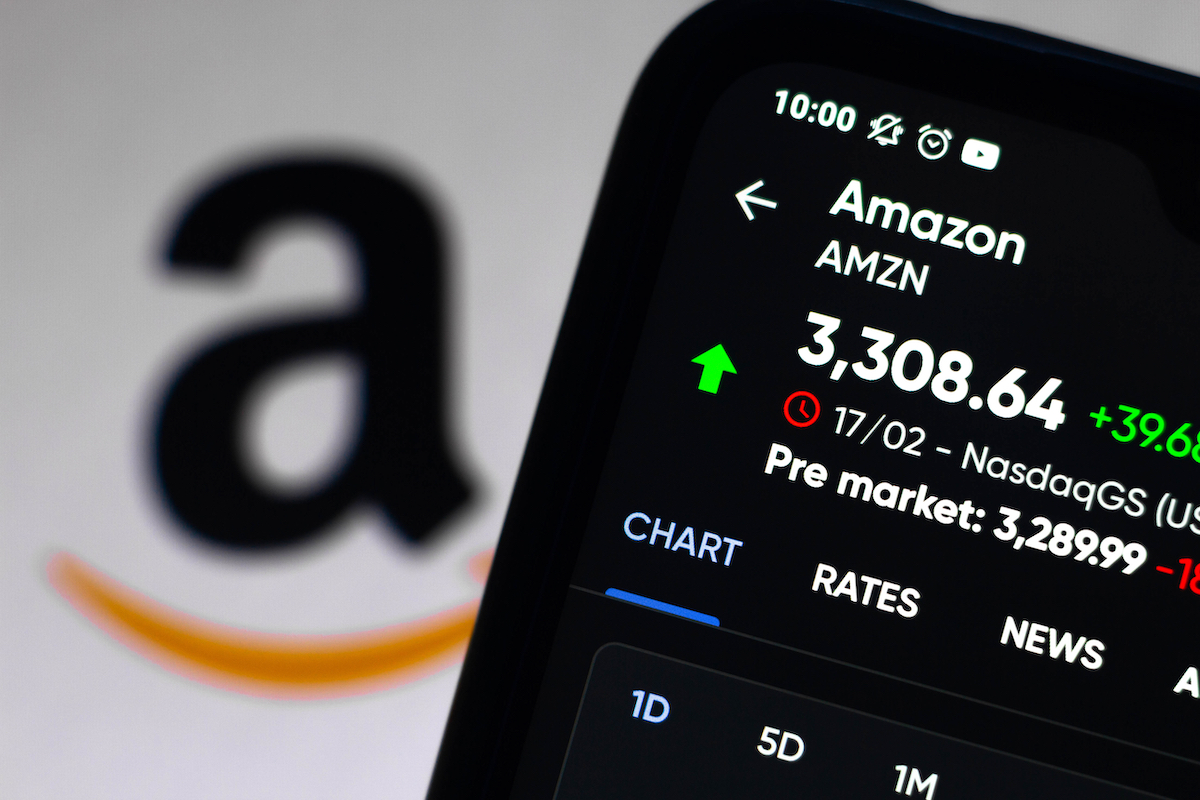Nowadays, the idea of a share of Amazon stock being under $100 sounds like a pipe dream. But it wasn’t in February of 2009. I bought a bunch of Amazon stock in February of 2009 after the release of the Kindle 2, and I held onto it since then. The reasons why I bought the stock originally are not the reasons Amazon is valued so highly today, but the reason why I hold the stock has never changed.
Flashback to February 2009
We were in the right in the middle of a housing crash, the iPhone was just 2 years old, and grandparents were just starting to learn about Facebook. Weird, right? Around this time, I had dabbled in investing a little bit. I made some lucky short term bets on companies that are no longer around, a few hundred bucks here and there. I learned why penny stocks are scams the hard way, but other than that – I had very little experience in the stock market. Enter Amazon. By this time, I had quite a bit of experience with Amazon as a customer. As a college student, I used Amazon for my textbooks. They also gave college students prime memberships for free back then, so of course I used it. In general, Amazon seemed like an easy place to shop online.
What does all this have to do with buying the stock? In February 2009, Amazon announced the Kindle 2. That’s it. That’s why I bought the stock. I thought that Amazon’s continued focus on the Kindle was the company’s attempt to do for books what Apple did with music on iTunes and the iPhone. I wasn’t completely wrong either. The fact that they were coming out with a 2nd model meant that the first one probably did well enough to keep going. Real smart, right? I had no idea that they had a massive cloud computing business hiding in plain site, that their prime membership was one of the best strategies in corporate history, or that Amazon was just getting started with global dominance.

So what happened next? A year after I originally bought the stock, the price was down. Another year after that, it went up. A year after that: flat. I definitely did not “time” this stock purchase. However, after around 7 years, my original investment had appreciated over 300% in value. It was still a good company to hold onto and Amazon kept growing and reinvesting in its growth. In 2015, things changed wildly for Amazon. In their shareholder meeting that year, they told investors how profitable and massive the AWS cloud business really was. That began the meteoric rise that we know the AMZN stock to be today. In the years since, Amazon shares have soared to hitting highs of over $3,500 per share: over 50 times what I paid originally.
Why it Matters
You don’t have to be a genius when it comes to picking stocks. You have to be patient, and you have to pick good companies. More importantly: YOU NEED TIME. If you’re thinking of buying a home instead of renting, you need time to plan for that. Did I think the Kindle was going to take over the publishing industry? Who knows. But I believed it was going to do something. Simply put, I saw a company making huge bets in business categories where other companies were sitting too comfortable. Amazon was betting on the future, not profiting on their past successes. Plus, I liked Amazon as a customer. It was relatable to me.
What I learned
Here are my biggest takeaways from my success with Amazon and other investments:
- Buy what you believe in. Look at companies betting on the future, not capitalizing on the past. Sears was revolutionary with their product catalogues in 1887. Not in 2021.
- Don’t panic when it doesn’t go your way. When a stock crashes, that’s the market doing its thing. If the underlying reasons why you bought the stock haven’t changed, don’t change anything. In fact, that might be an opportunity to buy a little bit more if you still believe. You only lose money when you sell a losing stock. Until then, you haven’t lost anything. Give the market and the company a chance to come around.
- Don’t sell if you don’t have to. Winning stocks keep winning. $100 becomes $200, then $400, then $800, then $1600. If you sell half when you doubled at $200, you’ll only have $800 when you could have had $1600. If you don’t need the money and still believe in the company: don’t change a thing!
- Time is your friend. I bought Amazon in 2008 and have waited patiently for 13 years. I didn’t check daily, I didn’t panic, I just bought it and went on with my life doing other things. The market goes up, it goes down, and you have no control over it. You don’t have to be a genius to buy a good company, you just need time.
- Diversify. Amazon wasn’t my only stock. It’s just the one I’m talking about. If I had invested the same amount in 50 companies in 2008 and just one of them was an Amazon while the other 49 went completely bankrupt, I still would have made money. Make smart bets on many good companies and the chances are that one of them will pay for the rest. More than likely, you’ll have more than one winner. You can only lose 100% of your money with a stock, but you can make 5,000%.
- No FOMO. Don’t jump on the hype-wagon, just do what you know best. My friend bought shares in Sony because he thought the Playstation 5 was amazing. There is nothing wrong with that. Recently I stopped in at a Gamestop store and it was a terrible experience – I have no idea why anyone would want to own shares in that company. There are so many things that can happen with a company or the market that you have no control over. The one thing you do have control over is your own experience and perception of a business. Buying a stock is like voting for a company’s success. Don’t vote for a company you don’t like or understand.
What next?
Get started NOW. If you don’t have a trading account, GET ONE. Find the best investment apps that work for someone in your situation. If you don’t have extra money to invest, look for side jobs that can help you make money fast. If you could put just $100 a month into the stock market, that $100 could become $5,000 in 10 years. Who knows what it would be in 20 or 30 years? You might spend $100 eating out at restaurants this month, but would you spend $5,000? That’s what it’s like when you don’t invest. Every $100 you spend on something you don’t need could be costing the future you $5,000.
